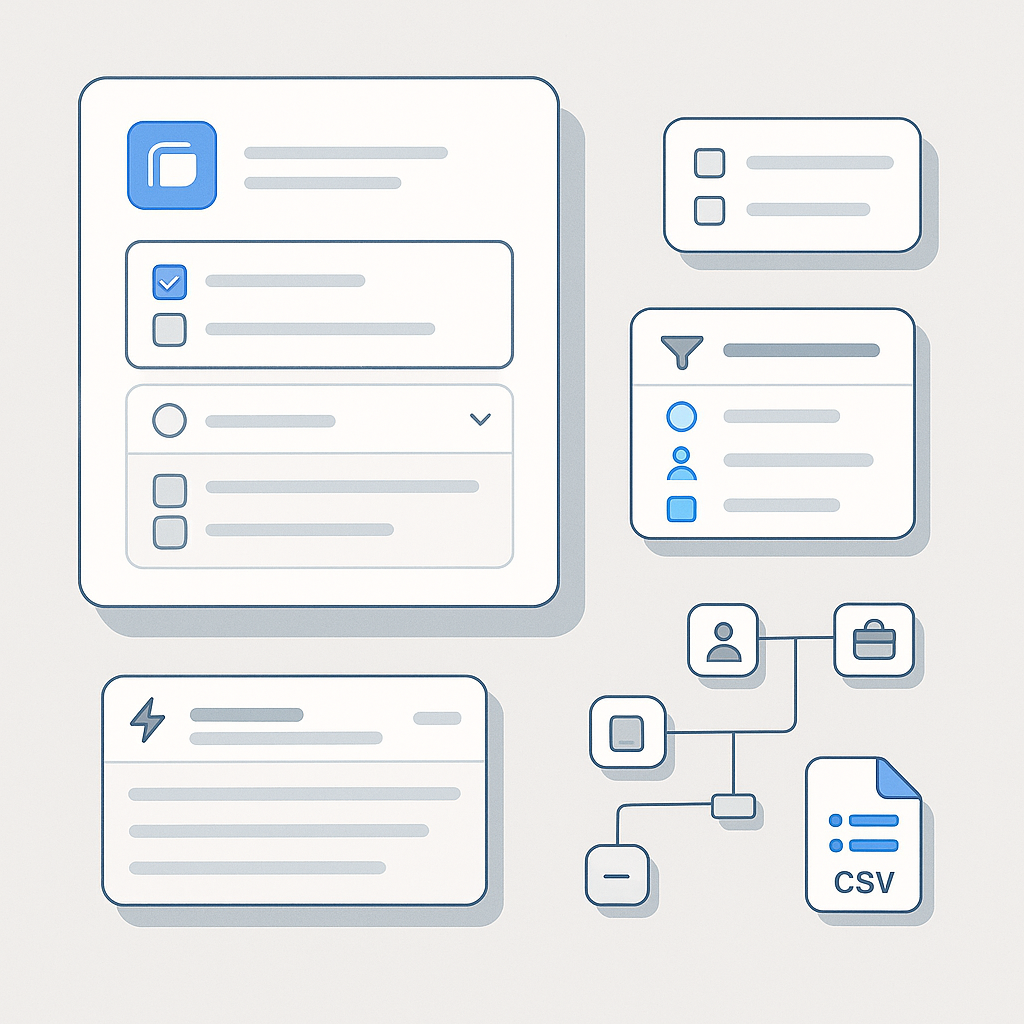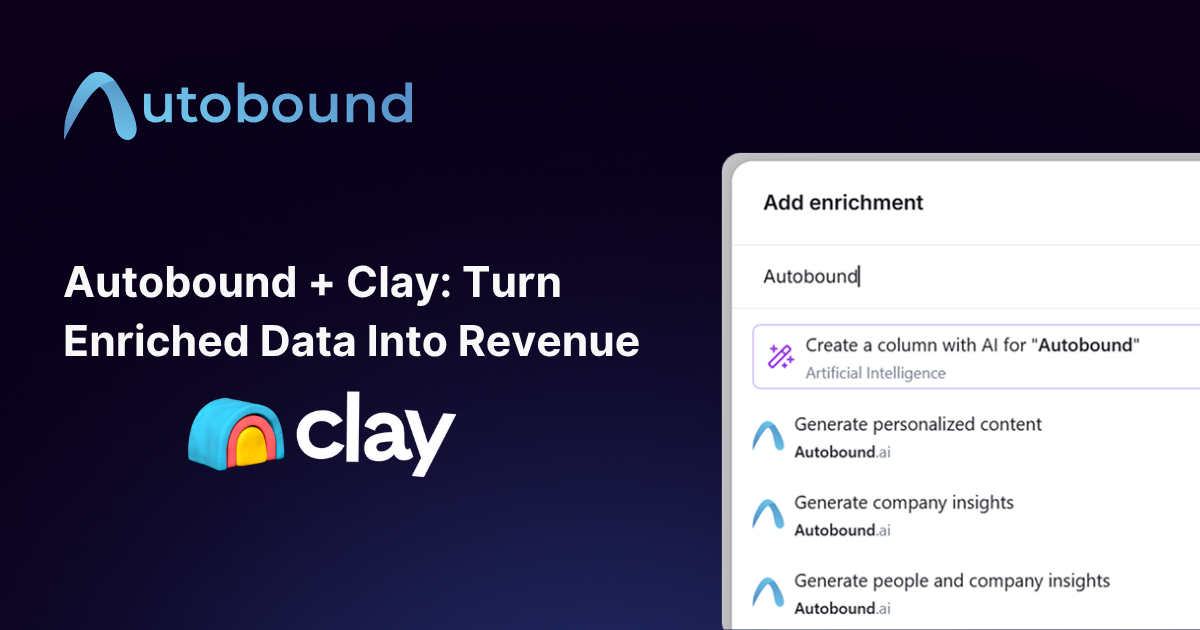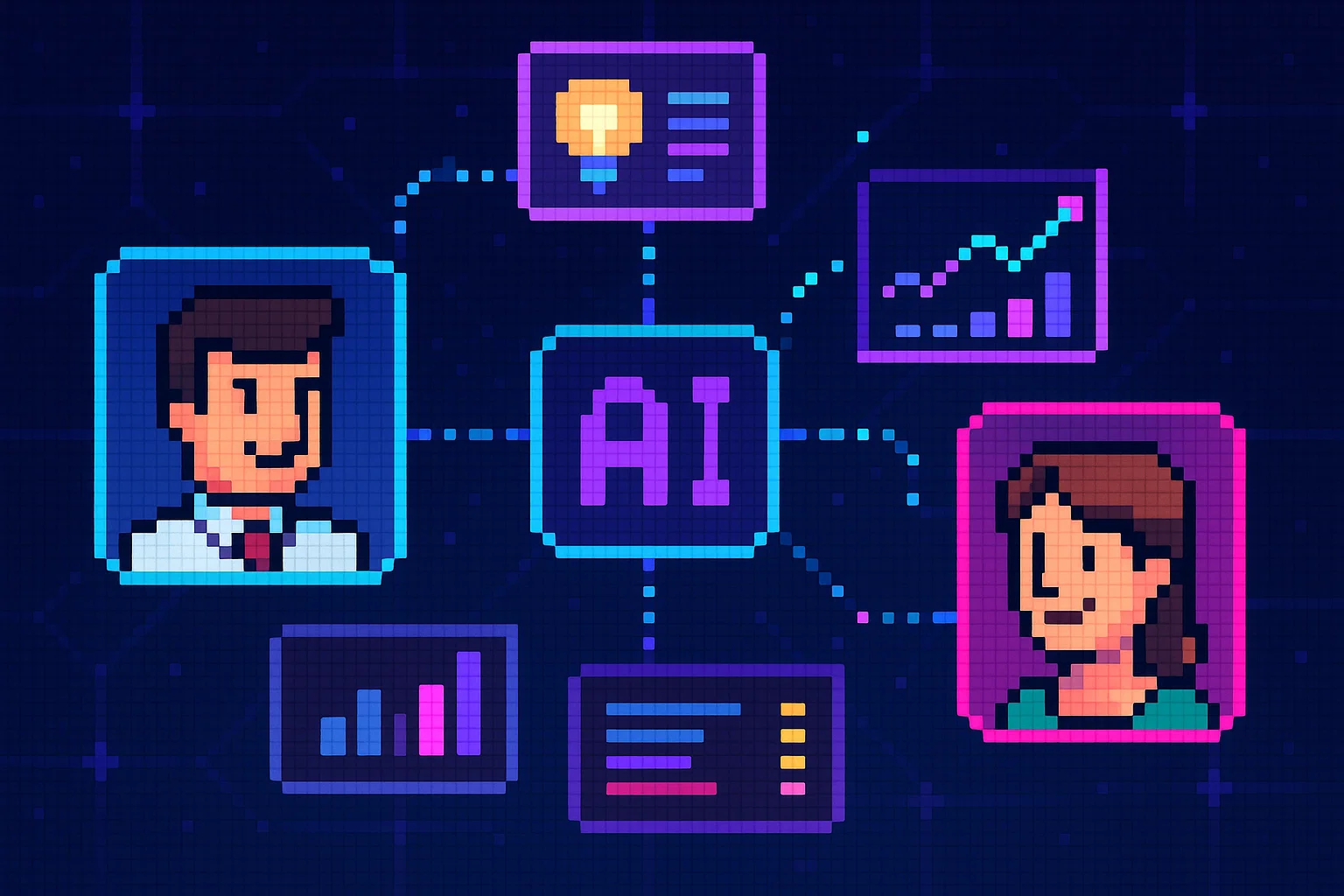Introduction: The Prospecting Evolution (and Why It Matters Now)
Remember the good old days, when finding new leads meant hitting up industry events, cold-calling from a phone book thicker than a dictionary, and hoping your direct mail campaign didn't end up in the recycling bin? Okay, maybe those weren't the *good* old days, but they were certainly simpler times.
Today, the B2B buying landscape has transformed into a digital jungle, teeming with informed buyers who are bombarded with more information (and more generic outreach) than ever before. In fact, research from Spotio reveals that a whopping 50-90% of the buying decision is already made before a prospect even *thinks* about talking to sales.
This means if your sales team is still relying on those outdated, spray-and-pray tactics, you're not just missing out on opportunities—you're actively damaging your brand and your bottom line. Think about it: when was the last time *you* responded to a generic cold email or felt excited about a sales pitch that felt like it was pulled straight from a 1980s sales manual?
But here's the good news: just like that trusty old phone book has been replaced by the power of search engines and social media, there's a new breed of prospecting techniques ready to revitalize your B2B sales pipeline. We're talking about strategies that are:
- Targeted: No more casting a wide net and hoping for the best. Modern prospecting is about identifying your ideal customers and focusing your efforts where they matter most.
- Personalized: Today's buyers crave personalized experiences. Modern prospecting is about understanding your prospects' unique needs and tailoring your messaging accordingly.
- Data-Driven: Gut feelings are great, but data-driven decisions are even better. Modern prospecting is about leveraging data and analytics to track your progress, optimize your approach, and make smarter decisions.
Ready to ditch the outdated playbook and step into the future of B2B sales? Let's explore 10 modern prospecting techniques that will help you explode your pipeline and achieve sustainable growth.
Technique #1: Embrace the Digital-First Reality
Why Your B2B Sales Pipeline Needs a Digital-First Approach
Let's face it, the days of three-martini lunches and handshake deals are fading faster than a Polaroid picture. Today's B2B buyers are digital natives, perfectly comfortable researching, evaluating, and even purchasing complex solutions entirely online.
Gartner predicts that by 2025, a staggering 80% of B2B sales interactions will occur in digital channels. That's right, 8 out of 10 interactions! This means if your sales team isn't prioritizing a digital-first approach, you're already falling behind.
So, how do you adapt? Start by transforming your website into a high-performing sales tool. It should be a treasure trove of valuable information, showcasing your expertise, solutions, and customer success stories in a clear, engaging way. Don't forget to optimize for search engines (SEO) so your ideal customers can easily find you when they're actively searching for solutions like yours.
Next, meet your buyers where they're already spending their time online. Data shows that over half the world's population is active on social media, and for B2B, LinkedIn is your digital handshake. Share insightful content, engage in industry discussions, and build relationships with potential customers.
Remember, in the digital-first world of B2B sales, visibility is key. Make sure you're showing up where it matters most.
Technique #2: Hyper-Personalization Is Non-Negotiable
How Hyper-Personalization Can Transform Your B2B Sales Pipeline
Let's be honest, nobody likes receiving generic, mass-produced emails—especially not busy B2B decision-makers. In fact, studies show that a majority of B2B buyers find their purchase experience to be overly complex, with irrelevant messaging being a major pain point.
The days of "spray and pray" outreach are long gone. Today, it's all about hyper-personalization. Think of it like this: would you rather receive a generic postcard or a handwritten letter from a friend? The same principle applies to B2B sales.
Hyper-personalization means going beyond simply addressing your prospect by name. It's about understanding their unique pain points, goals, and challenges, and tailoring your messaging accordingly.
Start by leveraging data enrichment tools to gather insights about your prospects. What's their role? What are their company's latest initiatives? What are they discussing online?
Next, use this information to craft highly targeted messages that resonate. Did their company just announce a new round of funding? Congratulate them and explain how your solution can help them put that capital to good use. Did they recently share an article about a challenge in their industry? Reach out with a personalized message offering insights and solutions.
Remember, in the battle for attention, personalization is your secret weapon. By demonstrating genuine interest and understanding, you'll cut through the noise and dramatically increase your chances of engagement.
Technique #3: Leverage Intent Data
Why Intent Data is Essential For a Healthy B2B Sales Pipeline
Imagine you're a detective working a case. You wouldn't just start interviewing random people on the street, would you? You'd look for clues, follow the evidence, and focus your efforts on the most likely suspects.
Intent data is like the digital breadcrumbs your prospects leave behind as they navigate the web. It goes beyond basic demographics and provides valuable insights into their actual interests and buying intent.
For example, let's say a prospect has visited your pricing page multiple times, downloaded several product guides, and even watched a few customer testimonial videos. These actions clearly indicate a strong level of interest in your solutions.
By leveraging intent data, you can prioritize your outreach efforts on the hottest leads—those who are actively researching and showing a high propensity to buy. This means less time chasing dead ends and more time connecting with prospects who are ready to engage.
There are a variety of tools available that can help you track intent signals, such as website visits, content downloads, and engagement with your social media posts. Use this information to your advantage by tailoring your messaging to the specific content or solutions a prospect has shown interest in.
Remember, in the world of B2B sales, timing is everything. Intent data helps you strike while the iron is hot and engage with prospects when they're most receptive to your message.
Technique #4: Master Multi-Channel Outreach
The Power of a Multi-Channel Approach for B2B Sales Pipeline Growth
Gone are the days when a single phone call or email blast could fill your sales pipeline. Today's B2B buyers are engaging with content and interacting with brands across a multitude of channels. In fact, research shows that B2B buyers utilize numerous channels during a typical purchase journey, often 10 or more.
To effectively reach your target audience and guide them through the sales funnel, you need a cohesive multi-channel outreach strategy. This means meeting your buyers where they are, whether it's on LinkedIn, Twitter, through targeted ads, or even via a well-timed phone call (yes, sometimes a human voice is still the best tool for the job!).
Start by mapping your outreach to the buyer journey. What channels are most effective for building awareness? Which ones are best for nurturing leads during the consideration phase? And finally, how can you leverage different channels to drive conversions and close deals?
Remember, consistency is key. Ensure your brand voice, messaging, and value proposition are aligned across all channels to create a seamless and positive experience for your prospects.
Technique #5: Content is Your Secret Weapon
How High-Quality Content Can Supercharge Your B2B Sales Pipeline
In the world of B2B sales, knowledge is power. By creating and sharing valuable content, you can position yourself as a trusted advisor and thought leader in your industry. This approach shifts the focus from "selling" to "helping," which is far more effective in today's buyer-centric landscape.
Think about the questions your ideal customers are asking and the challenges they're facing. Then, create content that provides answers, insights, and solutions. This could include blog posts, case studies, white papers, webinars, or even engaging videos.
Once you've created high-quality content, don't just let it gather dust on your website. Promote it through social media, email newsletters, and even paid advertising to reach a wider audience.
Remember, content is a powerful tool for starting conversations and building relationships with potential customers. By offering valuable resources upfront, you're demonstrating your expertise and building trust, which can pay dividends down the road.
Technique #6: Don't Underestimate the Power of Video
Why Video Should Be Part of Your B2B Sales Pipeline Strategy
In today's fast-paced, information-saturated world, capturing and holding someone's attention is no easy feat. That's where video comes in. Video is inherently more engaging and memorable than text-based content, making it an incredibly powerful tool for B2B sales prospecting.
Think about it: would you rather read a lengthy email or watch a short, engaging video? Experts point out that video prospecting is highly effective, cutting through the digital noise and building trust more effectively than text alone.
The possibilities for using video in your prospecting efforts are virtually endless. You can create personalized video messages for LinkedIn outreach, record product demos, showcase customer testimonials, or even develop explainer videos that break down complex concepts in an easy-to-understand way.
When creating videos, keep them concise, engaging, and focused on providing value to your audience. Remember, attention spans are short, so get to the point quickly and make sure your video is something your prospects will actually want to watch.
Technique #7: Social Selling Is Table Stakes
How to Win with Social Selling: B2B Sales Pipeline Edition
Social selling is no longer a "nice-to-have" for B2B sales teams—it's table stakes. But it's not just about racking up likes and followers. Effective social selling is about building genuine relationships, establishing trust, and positioning yourself as a valuable resource within your industry.
For B2B, LinkedIn is the undisputed champion of social selling. Start by optimizing your profile to clearly communicate your value proposition and areas of expertise. Then, focus on sharing valuable content that resonates with your target audience. This could include industry insights, thought leadership pieces, or even links to your latest blog posts or webinars.
But don't just be a passive observer. Engage authentically with your network by joining conversations, answering questions, and participating in relevant groups. The more you contribute to the community, the more visible you'll become as a trusted resource.
Remember, social selling is a marathon, not a sprint. It takes time to build relationships and establish credibility. But by consistently providing value and engaging authentically, you'll turn your social media presence into a powerful engine for generating leads and driving sales.
Technique #8: Leverage AI and Automation (The Right Way)
AI for Sales: Modernizing Your B2B Sales Pipeline (Without Losing That Human Touch)
Artificial intelligence (AI) and automation are transforming the world as we know it, and B2B sales are no exception. But before you envision an army of robots replacing your sales team, take a deep breath. The reality is far more nuanced and, dare we say, exciting.
AI and automation are incredibly powerful tools for handling repetitive, time-consuming tasks, freeing up your human sales reps to focus on what they do best: building relationships, understanding complex needs, and closing deals.
In the realm of prospecting, AI can be a game-changer. Imagine a world where AI qualifies leads, personalizes email outreach, schedules meetings, and analyzes data to identify the most promising opportunities—all while your sales team focuses on high-value interactions.
The key is to leverage AI and automation strategically. Start by identifying the areas where these technologies can have the biggest impact on your sales process. Then, research and select the right tools that align with your specific needs and budget.
Remember, AI should augment, not replace, the human element of sales. The most successful B2B sales teams will be those that find the right balance between leveraging technology and fostering genuine human connection.
Technique #9: Track, Analyze, and Optimize Relentlessly
Data-Driven Prospecting: Measuring Success in the Modern B2B Sales Pipeline
In the world of B2B sales, intuition can only take you so far. To truly optimize your prospecting efforts and achieve sustainable growth, you need to embrace a data-driven approach.
Think of data as your secret weapon for continuous improvement. By tracking key metrics, you gain valuable insights into what's working, what's not, and where you can make adjustments to improve your results over time.
Start by establishing clear key performance indicators (KPIs) that align with your overall sales goals. This might include metrics like website traffic, content downloads, email open and click-through rates, social media engagement, lead conversion rates, and sales cycle length.
Once you've identified your KPIs, use analytics dashboards to monitor your performance regularly. Look for trends, identify areas for improvement, and don't be afraid to experiment with different approaches to see what resonates best with your target audience.
Remember, the B2B sales landscape is constantly evolving. By embracing a data-driven mindset and continuously optimizing your prospecting strategies, you'll stay ahead of the curve and achieve sustainable growth.
Conclusion: The Future of B2B Sales Pipeline Growth Is Here
The days of outdated, impersonal prospecting tactics are over. Today's B2B buyers demand a more personalized, engaging, and value-driven experience. By embracing the 10 modern prospecting techniques outlined in this post, you can transform your sales pipeline, accelerate growth, and achieve lasting success.
Remember, the key is to meet your buyers where they are, provide genuine value, and leverage data and technology to personalize your outreach at scale. By adopting a digital-first, customer-centric approach, you'll position your sales team for success in the ever-evolving world of B2B sales.
About Autobound
Autobound's leading AI-powered platform delivers 350+ unique insights for go-to-market teams from financial filings, social media activity, 35 news events, competitor trends, job changes and more. Trusted by 7,000+ companies including TechTarget and validated by 220+ 5-star G2 reviews, we're unlocking hyper-personalization at scale, with native integrations for Salesloft, Outreach, and more. Leverage our developer-friendly API, try our Chrome extension, try our platform free, or contact our team to eliminate guesswork and drive measurable growth →
Built with love in San Francisco, CA




